When the world shut down in 2020, one of the surprising outcomes was the return of wildlife to places it hadn’t been seen in decades. We also weren’t commuting with the same frequency, so the air became cleaner. Greenspaces that had once been trampled underfoot daily grew lush again. Noise and water pollution improved.
In other words, when humans isolated themselves from the rest of the outside world — when we took an “anthropause” — Mother Nature became wild again.
COVID was hardly a rewilding project, but this unintentional side effect of the pandemic did change our relationship with nature. And as we began reprioritizing our relationship with natural landscapes, we started looking differently at conservation tourism.
Look around the world and you’ll see more tour companies, ecolodges, and resorts develop rewilding projects as part of travel. So what is rewilding? And how can you participate in conservation while you travel?
What is Rewilding?
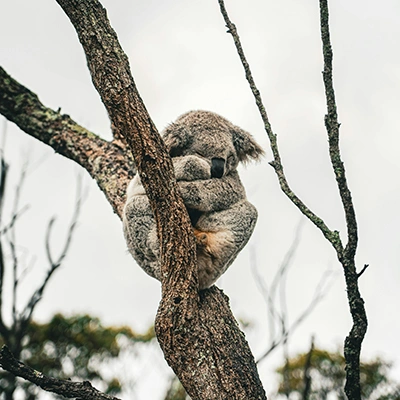
Human intervention has impacted wilderness areas around the world, sometimes leading to deforestation, the destruction of animal habitats, and polluted waterways. The loss of natural land can also negatively impact human health and food security.
Rewilding projects aim to remove that human intervention as much as possible so that the ecosystem can regrow and regenerate. It doesn’t, however, mean that we as humans have to completely vacate the area. Realistically, that might not be possible. But we can reduce our impact, even as we travel, giving nature a chance to do what it does best.
Is rewilding a good idea?
Trying to decide if rewilding is good or bad isn’t a new debate. Some of the most common cases come to light when we look at the reintroduction of wolves to Yellowstone National Park in the mid-1990s.
On one hand, bringing wolves back to the area solved an overpopulation problem. There were too many deer and elk in the area. That meant many plants and trees, which were the elks’ food source, dwindled. Due to overgrazing, the landscape was susceptible to erosion. Without enough trees, bird and beaver populations were threatened, too.
The loss of wolves because of overhunting in the 1920s was the start of an environmental domino effect. We see this interconnectedness of our ecosystem in so many ways. The availability of clean water impacts vegetation, plants help combat soil erosion and feed animals, the presence of native animals help to keep other plant and animal populations in check, and so on. The air is cooler and cleaner, there’s reduced fire risk, all because nature is able to do what nature is meant to do.
On the other hand of the wolf rewilding debate, people were concerned about the uncontrolled spread of the wolves. As a predator, what if they hunted more than just the deer and elk as intended. Ranchers, in particular, were concerned about livestock.
Another argument against rewilding is that it takes away land with high economic value to humans. Many of the lands sought for rewilding are used for agriculture or livestock, housing, and energy production.
Other arguments make the case that some rewilding projects don’t really address the real environmental problem, that they may actually create other issues, even if unintentionally. It’s expensive. It takes time, and a lot of it.
Rewilding Examples: Conservation Projects on Every Continent
It seems a little oxymoronic to say that ecotourism is important for rewilding. Wouldn’t we want people to stay away when we’re trying to allow a landscape to return to its wild state?
While we do need to step back long enough for Mother Nature to repair herself, responsible partnerships can help. As Condé Nast Traveler points out, many rewilding nonprofits are desperate for volunteers, and travelers are sometimes vital to their success. After putting in manual labor and learning more about conservation efforts, these voluntourists often become long-term advocates. When rewilding takes years, even decades, longevity is key.
Plus, ecotourism contributes jobs and money to local communities. We can’t expect rewilding to succeed if it ignores the human component, even while we try to minimize the negative impact of people. Tourism can offer that balance.
If you want to get involved, these rewilding projects you can visit will let you see the world in a smart, sustainable way.
Rewilding Projects in the USA
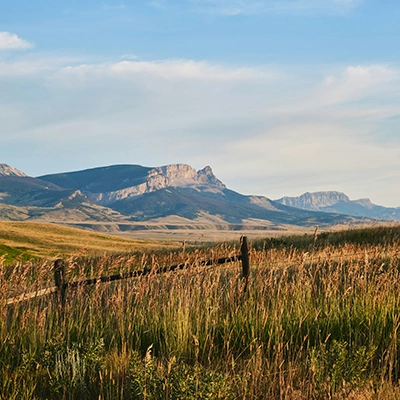
Some groups, like Rewilding America Now, are working with native and indigenous communities to reintroduce wild horses and regrow prairie habitats. And it’s all done with an eye toward rebalancing the natural ecosystem while still respecting human culture and needs.
The American Prairie Reserve in Montana has acquired hundreds of thousands of acres of land, reintroducing bison, prairie dogs, cougars, black-footed ferrets, birds, and other grasslands wildlife lost due to earlier agriculture. You can visit American Prairie, staying in one of their campgrounds or huts, and taking part in a range of activities. There’s hiking and biking, as well as bird watching, viewing prairie dog towns, dark-sky stargazing, and more.
Farther east in Maine is the Inn by the Sea, just outside Portland. Among the luxury resort’s sustainability initiatives is a partnership with Maine’s Department of Conservation. Together, they work to restore the wetlands, sand dunes, and meadows at nearby Crescent Beach State Park. This includes the adorably named “rabbitat” — habitat for the endangered New England cottontail rabbit — by reintroducing native plant species and trying to eradicate invasive plants that harm local biodiversity.
The Inn by the Sea also hosts garden and wildlife walks, and serves lesser-known fish in its restaurant to discourage overfishing and give local fishermen a chance to expand their market sustainably.
Rewilding Projects in Australia
Australia has thousands of plant and animal species that can’t be found anywhere else on earth, putting its biodiversity in a league of its own. Unfortunately, it also has one of the world’s worst mammal extinction rates. The urgency with which to correct this was accelerated in 2019-20 when Australia suffered some of its worst bushfires that killed, harmed, or displaced 3 billion animals.
The reintroduction of the Tasmanian devil to mainland Australia is one of the major rewilding projects being taken on by Aussie Ark. Because of an overpopulation of dingoes, it’s been 3,000 years since Tasmanian devils have survived anywhere other than the island of Tasmania, but disease has put even that population at risk.
By reintroducing these critters to the mainland, Aussie Ark, along with other conservation partners, is on a path to controlling non-native animal species and rebalancing the Australian ecosystem. Aussie Ark leads “Devils in the Wild” tours and welcomes visitors to its conservation centers, along with hosting other experiences to promote the regeneration of Australia’s natural spaces.
In South Australia, there’s the Ikara-Flinders Ranges National Park. You’ll find it on the map about 260 miles (420 kilometers) north of Adelaide. And near the national park lies the Arkaba Conservancy, a luxury sustainable travel experience.
The land was converted from a sheep station to a rewilding preserve that gives travelers the chance to see the Outback in an “unspoiled” way. Visitors can reconnect with nature while contributing to conservation efforts such as removing feral species and promoting the regrowth of native plants.
Rewilding Projects in Europe
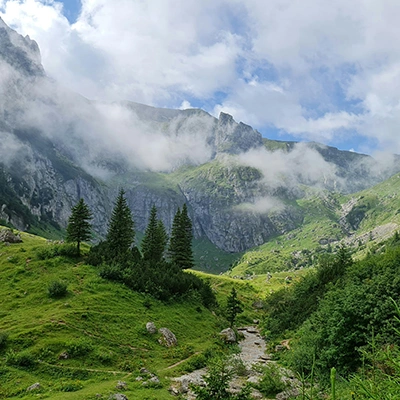
Additionally, the group hopes to help the local economy by promoting ecotourism and wildlife tourism. The Dundreggan Rewilding Centre is one of the first green businesses to introduce travelers to the rewilded area through short residential experiences.
Romania is home to the Southern Carpathian Mountains, nicknamed the Transylvania Alps. On the surface, this region’s ecosystem might appear to be thriving. You’ll find old-growth forests, healthy valleys, and substantial populations of quite a few varieties of wildlife.
What you won’t find, though, is the European bison, an animal that provides a surprising number of environmental benefits. Call it the circle of life; even the bison’s dung and carcasses are vital to maintaining the area’s eco-balance. And that’s why the World Wildlife Foundation and Rewilding Europe have spent the last decade reintroducing bison in Romania.
You can join a group that works with local guides to track bison and teach visitors about their importance. Companies like WeWilder also host weekend-long experiences to promote eco-education, and Responsible Travel organizes trips focusing on conservation, birdwatching, and volunteering with bears in Romania.
Rewilding Projects in Africa
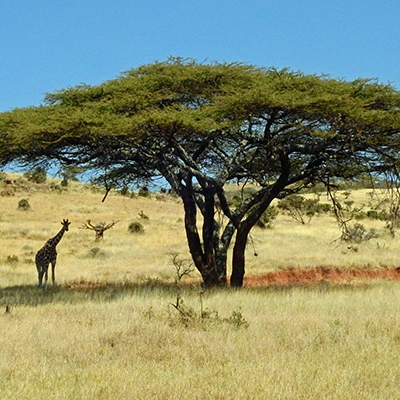
Seeing Gorongosa National Park for yourself gives you a glimpse of the early rewilding success. Hundreds of lions as well as buffalo, zebra, and wildebeest have been reintroduced. Explore on a safari or a visit to the Mount Gorongosa rainforest, home of a shade-grown coffee project. Coffee beans are grown by local farmers, and when you take some home, the proceeds from your purchase support girls’ education, environmental conservation, and community building.
Kenya has long been a top destination for safaris. It only makes sense that to preserve this important aspect of their tourism — and the environment that feeds it — there would be growing interest in rewilding.
The Mount Kenya Safari Club is one business hoping to use ecotourism to support conservation efforts. It encourages taking safaris on bike or horseback, which cause less stress to wild animals than trucks and jeeps. There’s also an animal orphanage on the resort’s property that cares for animals that can’t be rewilded.
Proceeds from tickets to the animal orphanage as well as part of the cost of your stay go directly to conservation projects. The resort’s mountain bongo program alone, which is reintroducing the endangered antelope-type animal to the area, reportedly costs about $1 million each year. Your tourist dollars are a big part of what makes paying for such big goals possible.
Rewilding Projects in Asia
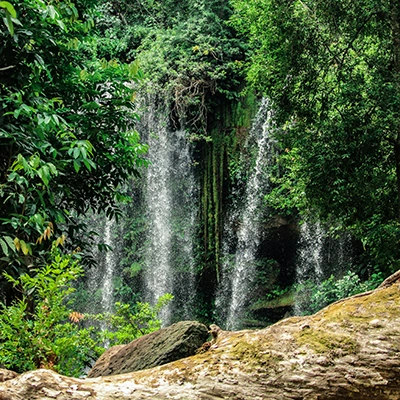
The Cardamom Tented Camp creates a safe corridor for animals like Asian elephants, leopards, and green peafowl who have seen their habitats decimated. You can take guided hikes or kayak trips through the park, seeing these and other animals while helping rangers patrol the area. The camp is accessible only by boat, but you won’t be completely roughing it. It is solar-powered and has been described as luxury glamping.
Kazakhstan might not be at the top of your travel bucket list, but these rewilding projects might change that. The Altyn Dala Conservation Initiative has been rewilding wetland, semi-desert, and desert lands in this Central Asian country for years. Much of it is geared toward rebuilding migratory routes and corridors for native wildlife.
Exploring this region with reputable guides means you’re supporting a project that’s protecting saiga antelopes, an endangered species suffering from poaching, disease, and other human interference; and kulan, the Asiatic wild donkey nearly driven to extinction for their meat.
Rewilding Projects in South America
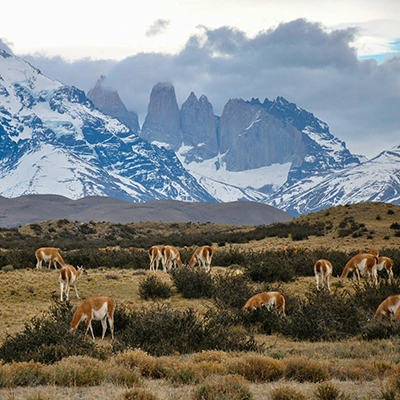
Over the years, wildlife like the giant anteater, pampas deer, tapir, macaw, and jaguar have been reintroduced to “recalibrate” the ecosystem. Jaguars in particular had become all but extinct locally due to hunting — ranchers were protecting their cattle — and climate change.
People’s initial resistance to the rewilding efforts began to shift when the project was able to introduce ecotourism to the Iberá wetlands. Those who started out fighting the conservation efforts are now rangers, tour guides, and support for the myriad businesses related to sustainable travel. You can support those businesses through tours with companies like andBeyond, which has operated in the area and in support of ecotourism, for years.
Farther south and across the border into Chile, you’ll find more conservation tourism. Torres del Paine National Park is probably the most well-known nature preserve in the region, and nearby are several projects designed to counteract the negative effects of tourism. And of all things, it’s using tourism to do it.
Cerro Guido is one area working to save the region’s pumas. As an ecotourist, you can go behind the scenes of these conservation efforts, helping to track the big cats’ movements in order to better protect them. Tours also include amazing opportunities for wildlife photography and immersing yourself in the biodiversity locals are working so hard to rewild.
Commit to Sustainable Tourism
Find more places that share the same commitment to sustainable travel that you do with our guide the best destinations for ecotourism.
Remember that part of responsible travel isn’t just where you go or what you do while you’re there. You can also take steps at home to reduce your environmental footprint before departure: research and only book with reputable companies, skip buying a new travel wardrobe, focus on high-quality gear that will last several trips, and purchase travel insurance that can provide coverage for medical expenses and helps reduce strain you might put on local resources if you get sick or hurt during your trip.
Visit SevenCorners.com for a quick travel insurance quote or talk to one of our licensed agents about the right coverage for your sustainable, savvy trip.
Travel Like a Pro with The Wayfinder
Did you enjoy this blog? Get more articles like it before anyone else when you subscribe to our monthly newsletter, The Wayfinder.
Sign me up